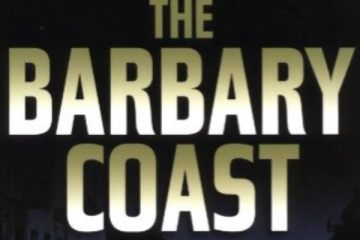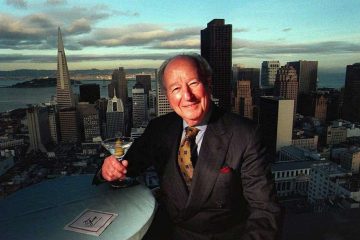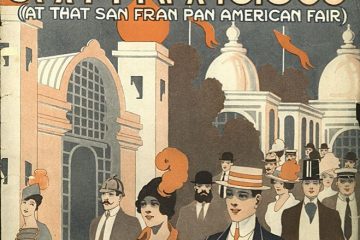SFCentric History: The San Franciscans Who Survived The Titanic
SFCentric History is a new column, by SF writer V. Alexandra de F. Szoenyi, that digs in the vaults of local history and shares the sensational people, places, and things that rocked San Francisco.

Photo: April 16, 1912 Sacramento Union, via CDNC
The sinking of the RMS Titanic is one of the biggest disasters in history. Many San Franciscans know the story of what happened, but did you know there were people from SF on that ship? One person in particular, Dr. Henry Washington Dodge, along with his wife Ruth Vidaver Dodge, and son Washington Dodge Jr., stepped aboard the ill-fated luxury liner and lived to tell the tale.
Photo showing the size of the Titanic in comparison to the Flood Building: The Virtual Museum of the City of San Francisco

Photo: February 24, 1912 San Francisco Call, via CDNC
Dodge, who attended Boy’s School in San Francisco, followed by the University of California, in 1881, was a physician, who then entered politics as part of Mayor James D. Phelan’s Board of Supervisors in 1896. In 1898, Dodge became the city’s Tax Assessor, and was known as “a noted expert” on taxation. He was set to begin his role as Vice President at the Anglo & London-Paris National Bank when he decided to take time off and travel. At the time, Washington Dodge was the “oldest official in the service” of San Francisco.
 Photo: Encyclopedia Titanica Washington took a leave of absence lasting two months, in order to travel with his family to Paris, to treat a blood disease he had. After touring Europe, the Dodges purposely left France to connect with the Titanic, which was headed for New York. On the ship, they occupied First Class cabin A-34 (Ticket # 33638, £81 17s 2d). The family was due back in San Francisco on April 25, 1912.  Photo: San Francisco Chronicle  Photo: San Francisco Call, via Encyclopedia Titanica Around midnight, the Titanic hit an iceberg and sunk into the icy-cold waters about 375 miles south of Newfoundland 2 hours and 40 minutes later. Days later, on April 19, Mrs. Dodge, who was able to get on lifeboat # 5 with her child, gave her account of her harrowing experience on the Titanic:  Photo: April 19, 1912 San Francisco Call, via CDNC Ruth and Washington Jr. were accounted for, but those close to Washington Dodge Sr. tensely awaited any word, days after the Titanic sunk. The April 17 edition of the San Francisco Call noted that Washington’s older son, Harry “busied himself during the day with attempting to get information from New York, and a number of employees in the assessor’s office also sent telegrams.”  Photo: April 17 San Francisco Call, via CDNC A bulletin posted in front of one of the New York newspaper offices listed Dodge as aboard the RMS Carpathia, but since most of those rescued were women and children, speculation ensued. One theory is that he was asked to go in one of the lifeboats (#13 to be exact) since he was a physician, and thus able more able to help others than other male passengers. Whatever the motivation, it was confirmed that Dr. Dodge was, in fact, rescued, and aboard that vessel. Before leaving the Titanic, he was reported as saying that he saw “two men who attempted to rush beyond the restraint line [who] were shot down by an officer who then turned the revolver on himself.” He also believes that President Taft’s aide, Major Archibald Butt, shot himself while on the ship.  Photo: April 17 Sacramento Union, via CDNC |

Photo: April 19 San Francisco Call, via CDNC
The Carpathia saved 868 (later believed to be 705) passengers from the Titanic. Mrs. Wallace Bradford of San Francisco, was on the ship when the rescuers were brought on board, and ended up giving her room to the Dodges. In her account of the rescue, she said that “in one of the boats came Mrs. Washington Dodge and her little 4 year old son. Dr. Dodge got aboard later, having come in one of the last boats that left the ship and it was a good deal of satisfaction to me to turn over my stateroom to them.”
The Dodge family returned to San Francisco on April 29, to lead whatever life of normalcy they could craft. Washington resigned as Tax Assessor in July 23, 1912, and took his post as Vice President of Anglo & London Paris National Bank. Dodge explained several times to newspapers his theories about what went wrong aboard the Titanic. He said there were women who went to get their valuables at the purser’s office instead of vacating, as well as women on the lower decks who weren’t awakened from sleep. He also pointed out the lifeboats launched that could have fit way more people, claiming he entered lifeboat #13 only after calls to women to get in the boat went unanswered.

Photo: My Mouse is Broken
To some, it could appear he was trying to assuage what is now known as survivor’s guilt, and/or the feeling he was looked down upon for leaving the ship while women and children were still on board (which was mostly likely paired with PTSD). In May of 1912, he spoke to the Commonwealth Club, breaking down in tears, and breaking down in detail once again his theories and beliefs about the tragedy. He prefaced his story about the women in the purser’s office by saying,
|
By 1919, Washington Dodge was 60, and had resigned as President of the Federal Telegraph Company (a role he left his bank career to pursue). He was facing a lawsuit by shareholders, who accused him of wrongdoing. Dodge’s once impeccable reputation and honor was tarnished. On June 21, he appeared to seek death in the same way that some on the Titanic, and some who survived the disaster did— “suicide while mentally unbalanced.” Henry Washington Dodge died nine days later on June 30, 1919, perhaps never truly having escaped the misery of the Titanic.










